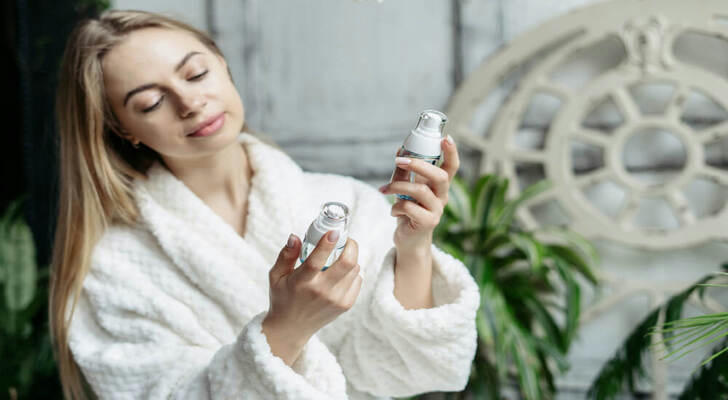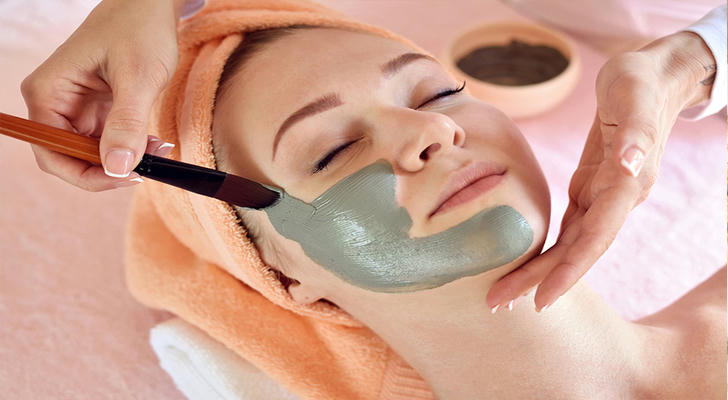The Ultimate Skincare Routine for Every Skin Type: From Oily to Sensitive
A good skincare routine isn't one-size-fits-all. While social media may praise the latest 10-step regimens or miracle serums, the truth is, your skin's unique needs should drive your choices. The key to radiant, healthy skin starts with understanding your skin type and tailoring your routine to match. Whether your skin is oily, dry, combination, or sensitive, here’s your ultimate guide to getting it right.

Step 1: Know Your Skin Type Before You Buy Anything
Before choosing products or building a routine, you need to understand your skin's characteristics.
Oily skin tends to produce excess sebum, leading to shine, clogged pores, and breakouts.
Dry skin often feels tight, rough, or flaky due to a lack of moisture and oil.
Combination skin typically features an oily T-zone (forehead, nose, and chin) with dry or normal cheeks.
Sensitive skin is easily irritated, with redness, burning, or allergic reactions to some ingredients or environments.
A simple test: Cleanse your face and leave it product-free for an hour. If it looks shiny, you’re likely oily. If it feels tight or appears flaky, you’re dry. If it’s shiny only in certain areas, you’re combination. If you experience itching or redness, sensitivity is your clue.
Step 2: Cleansing – One Size Does Not Fit All
Cleansing is the first and most essential step in any skincare routine—but the type of cleanser you use matters deeply.
Oily Skin: Use a gel or foaming cleanser that contains salicylic acid or tea tree oil to help break down excess sebum and unclog pores without over-drying.
Dry Skin: Go for a hydrating cream or milk cleanser with ingredients like glycerin, ceramides, or hyaluronic acid. Avoid sulfates and alcohol-based cleansers.
Combination Skin: Use a gentle foaming cleanser that can manage oil without stripping moisture. Look for balancing ingredients like niacinamide.
Sensitive Skin: Choose a fragrance-free, hypoallergenic cleanser with calming ingredients like chamomile or aloe vera.
Always cleanse twice daily—morning and night—to remove dirt, oil, and environmental pollutants.
Step 3: Toning – Balance and Prep
Toners prep the skin for the rest of your routine. While many people skip this step, the right toner can help rebalance pH and deliver lightweight hydration or treatment ingredients.
Oily/Acne-Prone: Use toners with exfoliating acids like glycolic or lactic acid. Witch hazel or zinc can also help control oil production.
Dry Skin: Hydrating toners with rose water, glycerin, or hyaluronic acid are perfect for giving skin a moisture boost.
Combination Skin: Try using two different toners—one for the T-zone and one for the cheeks—or opt for a balancing toner with green tea extract.
Sensitive Skin: Stick with alcohol-free, fragrance-free options. Look for calming ingredients like calendula or panthenol.
Apply toner with a cotton pad or pat it in gently with your hands.

Step 4: Serums – Treat Skin at a Deeper Level
Serums contain concentrated active ingredients that penetrate deeper into the skin than moisturizers.
Oily Skin: Niacinamide, zinc, and salicylic acid help regulate oil and reduce blemishes.
Dry Skin: Hyaluronic acid and vitamin E can restore hydration and protect the skin barrier.
Combination Skin: Use a hydrating serum in dry areas and a clarifying one in oil-prone zones—or find multi-tasking serums with ingredients like vitamin B5.
Sensitive Skin: Look for serums with madecassoside, Centella Asiatica, or peptides to soothe inflammation without causing irritation.
Less is more with serums. Use a pea-sized amount once or twice a day after toning.
Step 5: Moisturizing – Seal in the Good Stuff
Moisturizing is crucial for every skin type—even oily skin.
Oily Skin: Lightweight, oil-free gels with non-comedogenic ingredients like squalane or dimethicone are best.
Dry Skin: Rich creams with ceramides, shea butter, and fatty acids help lock in hydration.
Combination Skin: Use a light moisturizer on oily areas and a richer one where you’re dry, or find a gel-cream hybrid.
Sensitive Skin: Fragrance-free moisturizers with oat extract, panthenol, or allantoin help calm and protect.
Apply moisturizer while your skin is still slightly damp to enhance absorption.
Step 6: Sunscreen – Your Skin’s Daily Armor
Sun protection is non-negotiable. UV damage is a leading cause of premature aging, dark spots, and even skin cancer.
Oily Skin: Look for matte-finish or gel sunscreens labeled “oil-free” or “non-comedogenic.”
Dry Skin: Choose moisturizing sunscreens with added hydrators like glycerin or hyaluronic acid.
Combination Skin: Go for lightweight, broad-spectrum SPF with a semi-matte finish.
Sensitive Skin: Use mineral (physical) sunscreens with zinc oxide or titanium dioxide to avoid irritation.
Reapply SPF every 2 hours if you’re outside—even on cloudy days.

Step 7: Weekly Extras – Masks and Exfoliants
Adding a weekly exfoliation and masking session can level up your skincare game.
Exfoliants: Use gentle chemical exfoliants (like AHAs or BHAs) once or twice a week to remove dead skin and unclog pores.
Masks: Clay masks can help oily or acne-prone skin, while hydrating masks with hyaluronic acid work wonders for dry types. Sensitive skin benefits from soothing masks with oat or aloe.
Avoid over-exfoliating, especially if your skin is dry or reactive.
Tailor and Tweak as You Go
No skincare routine is static. Your skin changes with age, climate, hormones, and even stress. Track how your skin responds, and don’t be afraid to adjust. Listen to your skin—it often tells you exactly what it needs.
Consistency is key. Stick with new products for at least a few weeks before deciding if they work. And remember: skincare isn’t about perfection—it’s about care.
